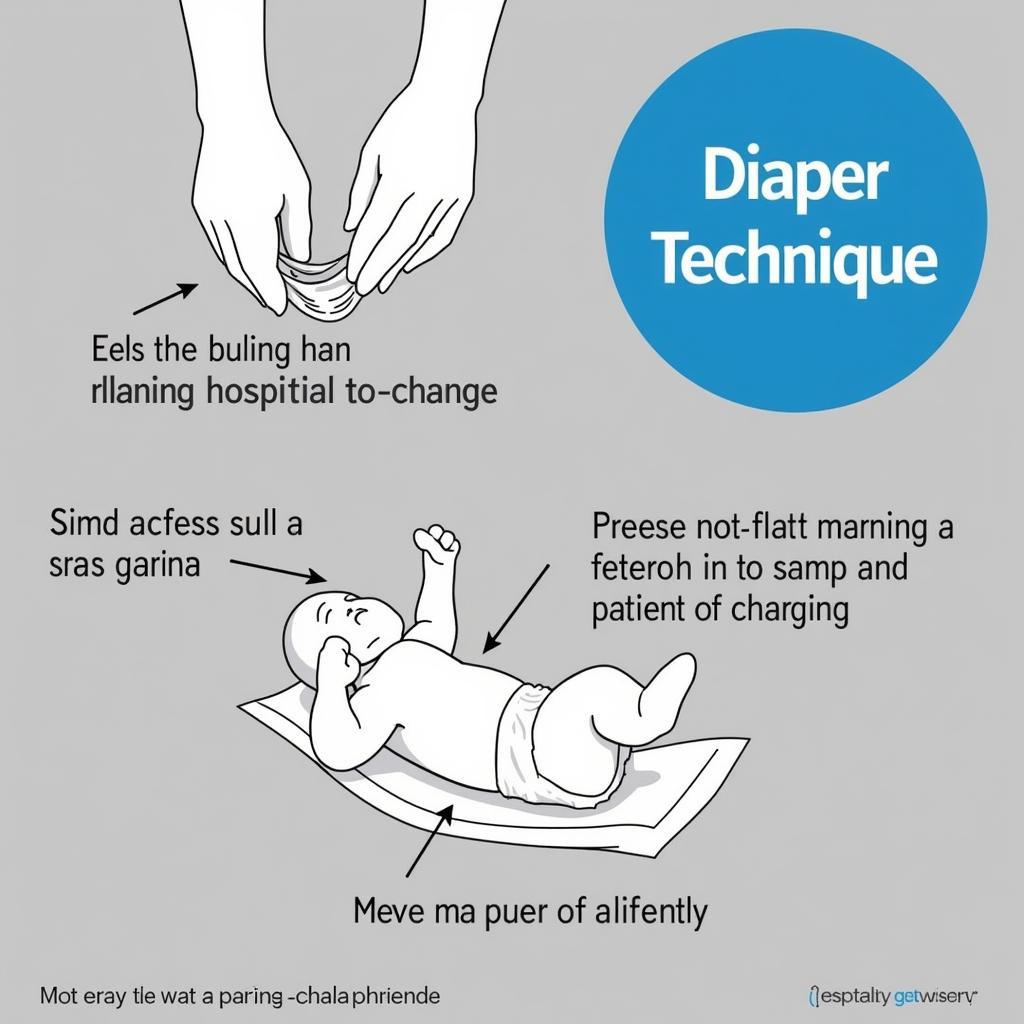Hospital Diapers are a crucial component of patient care, ensuring comfort and hygiene for newborns, post-operative patients, and individuals with incontinence. This guide will delve into the various types of hospital diapers, their uses, and the benefits they offer. We’ll also explore important considerations for healthcare professionals and families when choosing and using hospital diapers. After reading this, you’ll have a comprehensive understanding of hospital diapers and their role in promoting patient well-being.
Types of Hospital Diapers and Their Uses
Hospital diapers come in various sizes and styles to accommodate different patient needs. From premature infants to bariatric adults, there’s a diaper designed for optimal comfort and protection. Understanding these variations is key to providing the best possible care.
Newborn Diapers
Specifically designed for newborns, these diapers are smaller and gentler on delicate skin. They often feature a cutout for the umbilical cord to prevent irritation and promote healing.
Pediatric Diapers
Pediatric diapers cater to the needs of older babies and toddlers. They offer increased absorbency and a more robust design to accommodate active youngsters. These diapers are also available in various sizes to ensure a snug fit.
Adult Diapers
Adult diapers cater to a wide range of needs, from light incontinence to heavy urinary and bowel incontinence. They are available in various absorbency levels and styles, including pull-ups and briefs, to accommodate different mobility levels and preferences.
Bariatric Diapers
Designed specifically for larger individuals, bariatric diapers provide increased coverage and absorbency. They are crucial for ensuring comfort and dignity for bariatric patients.
Benefits of Hospital Diapers
Hospital diapers offer numerous benefits for both patients and healthcare professionals.
- Superior Absorbency: Hospital diapers are designed with advanced absorbency technology to keep patients dry and comfortable, minimizing the risk of skin irritation and infection.
- Enhanced Leak Protection: The secure fit and high-quality materials of hospital diapers provide excellent leak protection, reducing the need for frequent changes and promoting a hygienic environment.
- Skin Health: Many hospital diapers are made with breathable materials that help to maintain skin integrity and prevent pressure sores.
- Ease of Use: Hospital diapers are designed for easy application and removal, streamlining caregiving processes and saving valuable time for healthcare professionals.
Thinking about the right outfit after discharge? Check out our helpful guide on home from hospital outfit.
Choosing the Right Hospital Diaper
Selecting the appropriate hospital diaper is essential for ensuring patient comfort and preventing complications. Consider the following factors:
- Patient Size and Weight: Accurate measurements are crucial for selecting a diaper that fits properly and provides adequate coverage.
- Mobility Level: For patients with limited mobility, diapers with easy-to-use closures are essential. Consider mental hospital diapers for specific needs.
- Level of Incontinence: Choosing a diaper with the right absorbency level is crucial for preventing leaks and maintaining skin health.
- Skin Sensitivity: Patients with sensitive skin may benefit from diapers made with hypoallergenic materials.
Best Practices for Using Hospital Diapers
Proper usage of hospital diapers is vital for maximizing their effectiveness and ensuring patient comfort.
- Frequent Checks and Changes: Regularly check the diaper for wetness or soiling and change it promptly to prevent skin irritation and infections.
- Proper Skin Care: Cleanse the skin thoroughly during each diaper change and apply barrier cream as needed to protect against moisture.
- Secure Fit: Ensure the diaper fits snugly without being too tight to prevent leaks and discomfort. Proper fit also reduces the chances of chafing.
If you’re preparing for childbirth, consider our hoag hospital maternity classes. They provide invaluable information and support.
Hospital Diapers: A Critical Part of Patient Care
Hospital diapers play a vital role in maintaining patient hygiene, comfort, and dignity. By understanding the various types, benefits, and best practices for using these essential products, healthcare professionals and families can ensure optimal patient well-being. For specific needs regarding newborn attire, consider ropa recien nacido hospital.
 Healthcare Professional Changing a Hospital Diaper with Proper Technique
Healthcare Professional Changing a Hospital Diaper with Proper Technique
Remember the experience of a hospital cry? While emotional, ensuring comfort with the right diaper can make a significant difference.
In conclusion, hospital diapers are a critical element in providing comprehensive patient care. Selecting the right type and using them correctly can significantly impact a patient’s comfort and overall well-being. Properly fitted and regularly changed hospital diapers contribute to a more hygienic and comfortable environment for patients of all ages.
FAQ
- How often should hospital diapers be changed?
- What are the signs of a diaper rash?
- Are there eco-friendly hospital diaper options?
- How can I prevent diaper leaks?
- What is the difference between adult and bariatric diapers?
- Can hospital diapers be reused?
- How should soiled diapers be disposed of?
For any assistance, please contact us at Phone Number: 02437655121, Email: [email protected] or visit us at 298 Cau Dien Street, Minh Khai, Bac Tu Liem, Hanoi, Vietnam. We have a 24/7 customer service team.